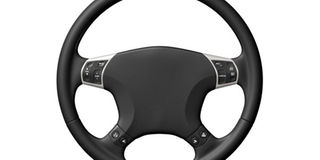Prime
Ask the Mechanic: What is understeer and oversteer?

What is understeer and oversteer and how do I prevent it and react safely while on the road.
Trony
Hello Trony, understeer and oversteer are terms used to describe the sensitivity of a vehicle to steering and how it affects the vehicle’s forward movement. Understeer is when a vehicle turns less sharply than intended, which can lead to unintentionally going off the road. Oversteer is when the car turns more inward than the driver wants it to, which can lead to a spin. Both of these situations are as frightening as they are dangerous.
You can counter the effects of understeer or oversteer by adjusting your driving style as well as improving your driving skills, buying appropriately designed new tyres, buying cars with modern safety technology such as TC (Traction control), ABS (Anti-Locking Brakes) and ESP (Electronic Stability Programme).
These two steering situations are of concern because they affect the car’s ability to stay the intended course on the road while a driver executes cornering manoeuvers or drives fast through corners.
Failure to stay the course (veering off the road) or getting into a spin can result from understeer or oversteer. This causes vehicle handling and safety issues such as skidding or possibly going off the road, which can lead to a crash or overturning.
To understand how to counter the effects of understeer and oversteer, one needs to understand how these vehicle dynamic and steering situations pause a challenge. Understeer is largely caused by the condition of tyres as affected by cornering stiffness, force generated at an angle against a rotating tyre (camber), cornering or side (lateral) force produced by a tyre during cornering and change in load carried by each vehicle tyre during acceleration (lateral weight transfer).
Understeer while cornering, happens when front tyres start slipping while rear tyres have grip. The vehicle will turn less than if all tyres had the same grip.
The opposite or oversteer will happen when rear tyres loose traction first. The front tyres with better traction will continue to accelerate the vehicle sideways (laterally) following the circle of the corner. However the rear tyres with less traction will not be able to follow the front tyres on the lateral trajectory around the corner. Instead the rear tyres will swing outwards compared to the front of the vehicle which will turn towards the inside of the curve. This is what causes vehicle spin if you continue holding the steering wheel at the same angle.
To prevent or counteract the effects of understeer or oversteer you need to drive carefully, avoid over speeding through corners and adapt to varying road conditions such as wet or loose gravel. Drive sensibly; avoid aggressive acceleration or harsh braking when driving through corners.
Avoid sudden abrupt steering manoeuvers when navigating through sharp corners in order to maintain balance of suspension and tyre grip. Learn the skillful responses to oversteer or understeer situations. When you feel the car skidding, turn in the direction of the skid to regain control and then steer normally. Steer smoothly and accelerate or brake gently. The design and condition of your car tyres will help you counter understeer or oversteer. Buy new tyres with modern tread designs which will help to maintain grip and avoid skidding.
Fitting bigger tyres on rear axles of vehicles is a common practice for some high performance passenger cars. High performance vehicles typically need maximum traction and usually suffer from oversteer which affects handling. Use of wider tyres on the rear axle tends to improve surface grip which gives better road holding. Wide rear tyres help car designers to induce understeer as a means to counter oversteer caused by high speed driving.
Buy cars with the modern dynamic safety technology mentioned above. These are safety systems which passively but safely adjust throttle, vary steering stiffness or apply varying brake pressure to different wheels depending on how fast they move to prevent loss of traction and skidding.

WHY ARE MY CAR BRAKES STILL SOFT AFTER REPLACING THE MASTER CYLINDER?
Hello paul, I drive a 2004 BMW X5 whose brake pedal feels soft and I have to pump a couple of times before I can brake. I have replaced the brake master cylinder and all brake pads are new and there are no leaking points. My mechanic has tried bleeding three times but brake remains soft. What is your opinion?
Vincent
Hello Vincent, a soft brake pedal is usually caused by a bad brake master cylinder which is primarily responsible for pressurising the brake fluid lines to engage brakes in order to stop the car as soon as you need to. Failure to restore brake pressure despite replacing the brake master cylinder, brake pads and bleeding or priming the brake lines could mean the brake system lines still have air.
It can take a little while to completely prime and eliminate air from the brake system. It is also crucial to establish that the master cylinder you installed is not faulty or the installation and commissioning was done correctly.
You need to rule out brake fluid leaks along all lines and at each of the four brake calipers.
Send email to: [email protected]




